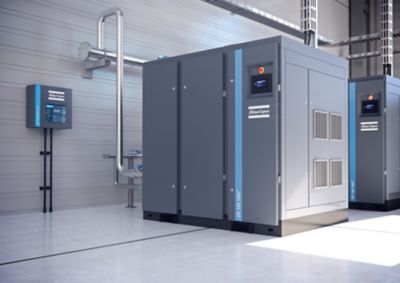The right compressed air pressure for cement plants
Compressed air systems are necessary for cement plants. They power critical processes like pneumatic conveying, material handling, equipment actuation, and silo fluidization. When considering these applications, you'll want to use the correct compressed air pressure.
This principle applies whether you're using an air compressor or blower. In addition to selecting the right pressure, you'll want the best equipment for your facility. This article explores how to make informed decisions regarding safe, efficient operations.
Understanding cement plant requirements
When planning your compressed air system, you'll need to consider that energy costs make up to 80% of owning and operating such equipment. This is worth keeping in mind as you're matching applications with the right air flow and pressure.
Applications
As mentioned in the introduction, cement plants have a wide range of needs. To choose the right equipment, you'll need to determine if the application requires pressure or vacuum.
Air volume and pressure
Once you've decided on the type of machine necessary, it's important to calculate the required air volume (flow rate) and pressure to determine the size of your compressed air equipment. If your equipment is too big, you can incur unnecessary operational costs. Every 1 bar of extra working pressure equals 7% excess energy consumption.
Types of blowers
The tradtional solution: Lobe (Roots) Blowers
Lobe blowers, also known as Roots blowers, have been around since the mid-19th century. Their principle of operation includes isochoric compression. With these machines, air enters the compression chamber and the volume remains constant as identical rotors rotate.
However, there's a catch. External compression leads to low efficiency and high noise levels. These limitations confine lobe technology to low-pressure applications.
The game changer: screw blowers
The screw blower is a modern alternative to the Roots blower. It uses Isentropic compression, which features opposing male and female rotors in its compression element. With this, the screw elements of this blower maintain a fixed, built-in pressure ratio. This eliminates mechanical forces that cause imbalance. Therefore, a screw blower can work at high shaft speeds, resulting in a large flow rate with compact dimensions.
Example of energy savings with an Atlas Copco screw blower
For the same pressure, our screw blower consumes significantly less power than our lobe blower. With this, let's consider an ambient temperature of 35°C.
Roots blower: consumes 61 kW with an air outlet temperature of 125°C.
Screw blower: consumes 43 kW with an air outlet temperature of 94°C. That’s 30% less energy.
In addition, screw blowers fine-tune internal airflow paths. This minimizes pressure drops and turbulence for optimized airflow.
Compressed air pressure safety considerations
Pressure limits
To achieve the right pressure, it's important to pay attention to maximum pressure ratings for compressor parts. You'll want to ensure pipes, hoses, and fittings match the compressor's rating.
Regular inspections
Throughout your operations, it's recommended to conduct routine safety checks. This includes hoses, connectors, and seals. If these aren't properly installed, you can encounter pressure drops and wasted energy. Compressor leaks are commonly overlooked.
Gauge & valve checks
The best way to evaluate such issues is by checking gauges and valves. If you notice a change in pressure, this can indicate an underlying issue. Additionally, the valves can be damaged, worn, or clogged. All of these pose performance and safety concerns.
Location and ventilation
Compressed air equipment should be placed in clean, dry areas. Additionally, you'll want them in the coldest part of your building. This is where there's the least amount of sunlight. As you can imagine, these machines generate a lot of heat.
Training and awareness
Your staff should be trained on safe handling. Educate them about risks and preventative measures. They should also know what to spot regarding routine maintenance.
Avoiding safety incidents
In addition to energy loss, improperly sized blowers can result in a rupture on a pneumatic conveying line, caused by clogging. This is a potential safety hazard for your workers.
Conclusion
Selecting the right compressors and blowers isn't just about performance. It's also about safety, sustainability, and cost savings. By understanding your plant's needs, evaluating options, and prioritizing safety measures, cement plants can optimize operations. It's important to choose the most efficient equipment for both your bottom line and the environment.

